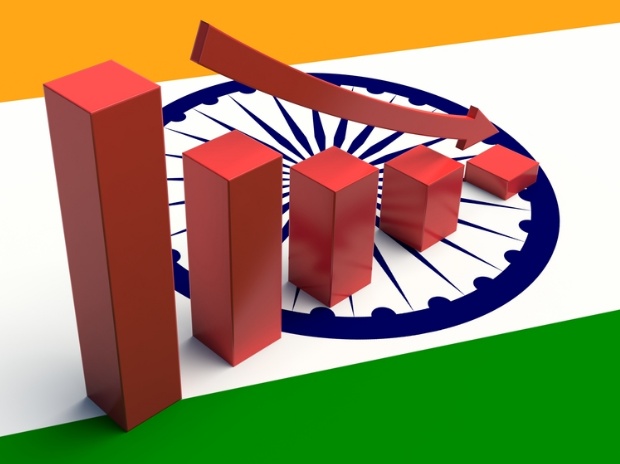
India’s GDP growth rate falling to 5.7% following Demonetization and GST implementation drives home the point that the Indian economy is going through a severely challenging phase as additionally reflected in economic indicators like GDP, Unemployment Rate, and Inflation. The economy has been on a downward spiral in the first six months of 2017. India has recorded steep downfall from 7% to 5.7% in the real GDP, which is one of the most crucial economic indicators for a country. Furthermore, index of industrial production has gone down from about 9 % in 2015-16 to about 1.7% in the second quarter of 2017.
The Government took some radical steps in the short duration of one year- Dynamic Demonetization policy and Glorified GST. Prime Minister Narendra Modi announced demonetization of Rs 500 and Rs 1,000 currency notes on November 8 last year.
Demonetization drive proved to be beneficial only to the banking sector and mobile wallet companies like Paytm
Demonetization was introduced with the goal to curb India’s shadow economy and suppress the use of illicit and counterfeit cash in the economy. However, demonetization drive proved to be beneficial only to the banking sector and mobile wallet companies like Paytm (the biggest beneficiary). Unfortunately, demonetization failed to curb black money as 90% of the scrapped and demonetized notes were back in the banking system within the first two months of the drive.
Digitization was supposed to be another benefit of Demonetization Drive. For a while, the data did suggest that online transactions increased, but the quantum of online transactions plateaued, and eventually dropped back to levels not significantly higher than pre-demonetization adoption rates.
The major tax reform, GST was implemented in July 2017 — has been widely hailed as a positive step because it should simplify business in the long run. But the implementation caused major disruption. “The implementation of the GST so far also appears to have had an adverse impact, rendering prospects for the manufacturing sector uncertain in the short term,” RBI governor Urjit Patel said on Wednesday. However, it is too early to pass a judgement on GST – within 100 days of implementation. Modi government introduced both – Demonetization and GST with the benign intention to boost Indian Economy.
From the economic point of view, it should be clearly understood that any major reform would cause disruptions in the early stage… and may prove to be developmental eventually
World Bank President Jim Yong Kim said that the Goods and Services Tax (GST) is going to have a hugely positive impact on the Indian economy. He also said that the recent slowdown in India’s economic growth is an “aberration” mainly due to the temporary disruptions in preparation for the GST, pointing out that it will get corrected in the coming months.
The prime minister claims that he has seen poverty from close quarters. His finance minister is working over-time to make sure that all Indians also see it from equally close quarters: Yashwant Sinha
To make the situation worse, the economic challenge faced by the country was turned into a political stunt when Yashwant Sinha, a former finance minister, somehow made a direct connection between a slowing GDP growth, demonetization and GST, without quite explaining how, or to what extent. In his article, ‘I need to speak up now’, he made direct allegation on the finance minister for working over-time to make sure that all Indians see poverty from close quarters. This led to the series of allegations among the political parties.
The reduction in GDP growth in the last quarter cannot be attributed to demonetization and GST alone
Prime Minister, Narendra Modi defended his stands and reassured, “It is true that there has been a reduction in growth, but it is also true that the government is fully committed to reversing this trend. Our fundamentals are strong.” The supporters of the Modi government suggested that ‘Inflation was no longer a problem’, which would certainly make things go awry.
The reduction in GDP growth in the last quarter cannot be attributed to demonetization and GST alone. There are other factors like sluggish industrial output, a stagnation of job creation, a sub-optimal monsoon, the general state of the agriculture sector – to name a few.
The GST Council has cut tax rates on 27 items and took steps to ease tax norms for small businesses and exporters
In an urgent bid to stabilize the economy, the GST Council, at its 22nd meeting held in New Delhi on October 6, has cut tax rates on 27 items and took steps to ease tax norms for small businesses and exporters.
Indian economy should be fueled from all corners ensuring that market does not fall prey to political disturbances
It is crucial for all Indian political leaders to understand the gravity of the situation and to look for a solution of the problem instead of harping about it and getting engaged in the blame game. This is the time when Indian economy should be fueled from all corners ensuring that market does not fall prey to political disturbances, which would further slow down the economy.
Disclaimer: The information, ideas or opinions appearing in this article are those of the author and do not necessarily reflect the views of N4M Media.